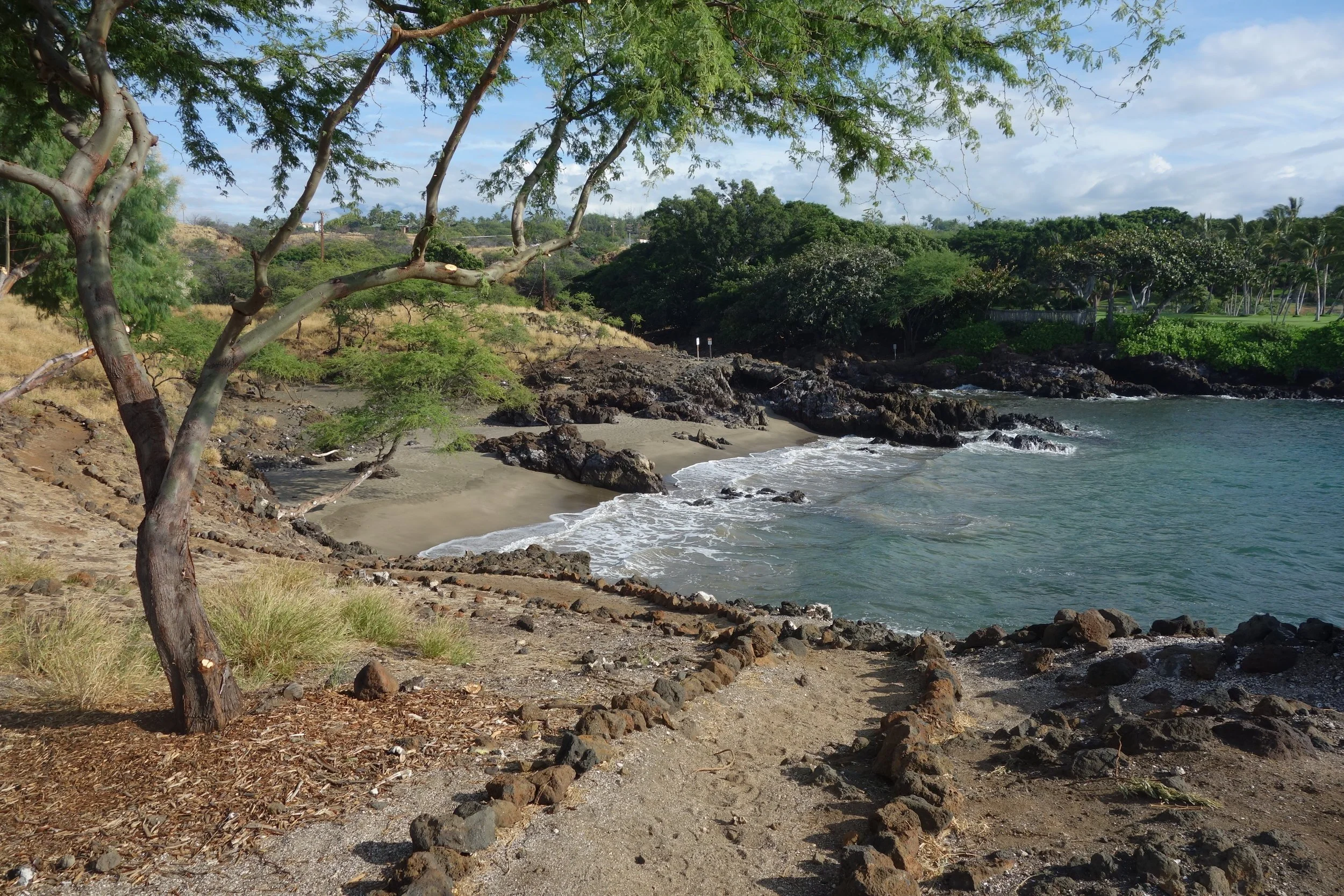A brief history of Ala Kahakai National Historic Trail: aka “the King’s Trail”
Hawai‘i’s Big Island is rich with history, and few places capture its ancient past as vividly as the Ala Kahakai National Historic Trail, also known as the King’s Trail. Winding along the island’s coastline, this historic path follows the footsteps of early Hawai’ians, offering a glimpse into their way of life and the deep cultural significance of the land.
What is the Ala Kahakai Trail?
The Ala Kahakai Trail (meaning "trail by the sea") is a 175-mile network of ancient coastal paths that once connected Hawaiian communities, fishing villages, and sacred sites. First established centuries ago, these trails were used by Native Hawaiians for travel, trade, and communication. Today, portions of the trail have been preserved, allowing visitors to experience the island by following the paths traveled by early Hawaiians.
Why is it important?
This historic trail serves as a living museum, showcasing ancient heiau (temples), petroglyphs, and traditional fishing shrines. Walking along the Ala Kahakai is not just a hike — it’s a journey through history, highlighting the resilience and ingenuity of Hawai‘i’s first inhabitants.
The trail also passes through protected cultural sites and fragile ecosystems, making conservation efforts essential for its preservation.
“Walking the Ala Kahakai Trail is like stepping back in time, following the same paths traveled by Hawaiian royalty, warriors, and commoners alike.”
Where to experience the trail
While much of the Ala Kahakai Trail is still being restored, several accessible sections provide incredible opportunities to explore:
Puʻukoholā Heiau to Spencer Beach Park – A scenic and historically rich stretch, home to one of Hawai‘i’s most significant heiau (temples).
Kaloko-Honokōhau National Historical Park – Walk along ancient fishponds, petroglyph fields, and lava-rock trails that tell the story of early Hawaiian sustainability.
Waikoloa Petroglyph Preserve – A relatively easy hike leading to thousands of ancient rock carvings that depict Hawaiian life and legends.
How to explore respectfully
The Ala Kahakai Trail is not just a hiking path; it’s a sacred and historical treasure. When visiting, keep these respectful practices in mind:
Stay on designated paths to protect fragile sites and native plant life.
Do not touch or remove petroglyphs, stones, or artifacts.
Follow all posted guidelines at cultural and archaeological sites.
Practice leave no trace principles to help preserve the trail for future generations.
Planning your trip
For more information on the Ala Kahakai Trail and preservation efforts, visit this page from the National Park Service. Make time to walk a portion of the Ala Kahakai Trail to experience its rich history for yourself. Here are some important guidelines:
Wear rugged footwear because the volcanic rock is very sharp and often unstable.
Carry sufficient water for your hike, as the sun and volcanic rocks can become very hot. We recommend trying this hike in the early morning when the weather is cooler.
Be ready in case of a problem, such as a twisted ankle or scrape from the lava. Have a cell phone or hiking partner who can help you in case of a problem.
Looking for more must-visit spots and insider tips? Check out our other blog posts for the best places to explore. If you’re dreaming of a Big Island getaway, book a stay at Our Hawai‘i Condo — a perfect home base for soaking up the sun, sand, and aloha spirit.












